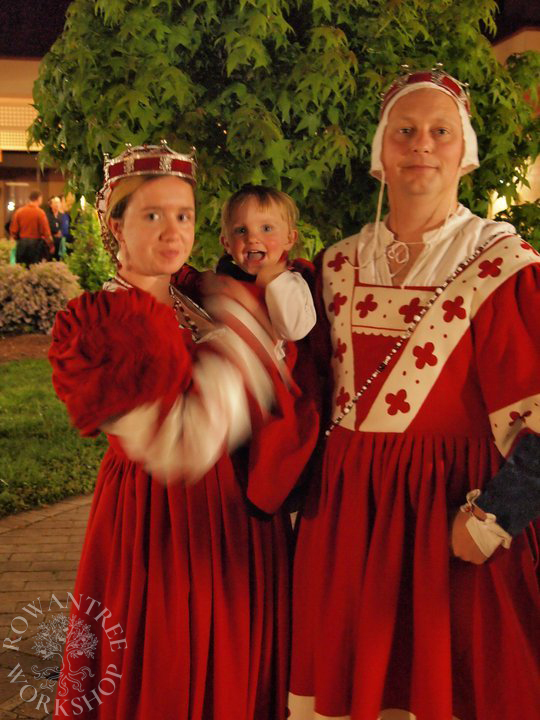An early 16th century Waffenrock (surcoat) in red and white wool, inspired by a Holbein painting.
I made this as part of a group effort to get a nice outfit together for my friend Aongus on short notice. Although this was to be court clothing rather than fighting, he really wanted a Waffenrock! Other friends made the Hemd (shirt), Wammes (doublet) and Hosen to go underneath.

Inspiration
The main source of inspiration was the painting of the Martyrdom of St Sebastian by Hans Holbein the Elder. I had taken photos of this painting in the Alte Pinakoteck and was very taken with the crossbowman in a green Waffenrock with white cutwork guards. Many similar images exist, such as this woodcut by Hans Sebald Beham.
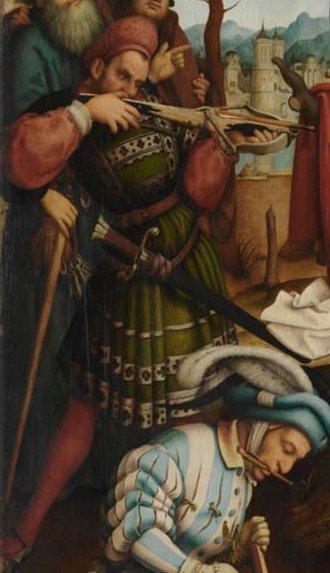
Source: Alte Pinakoteck
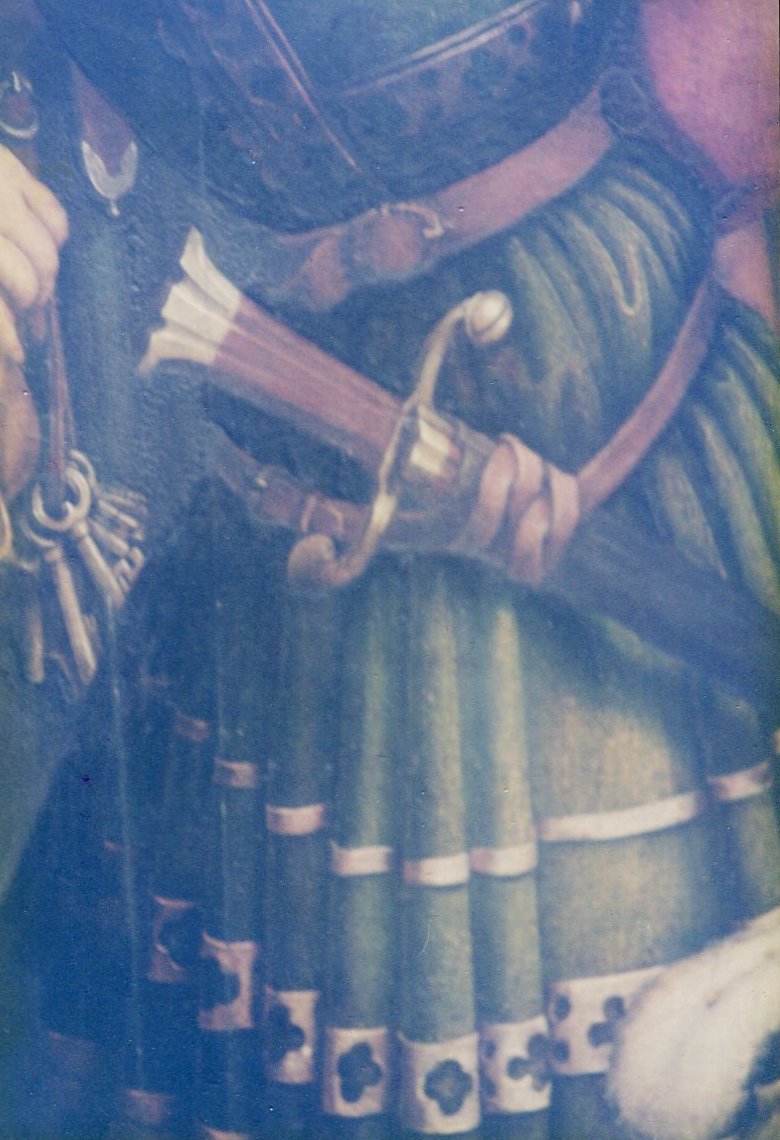
Photo: Robyn Spencer
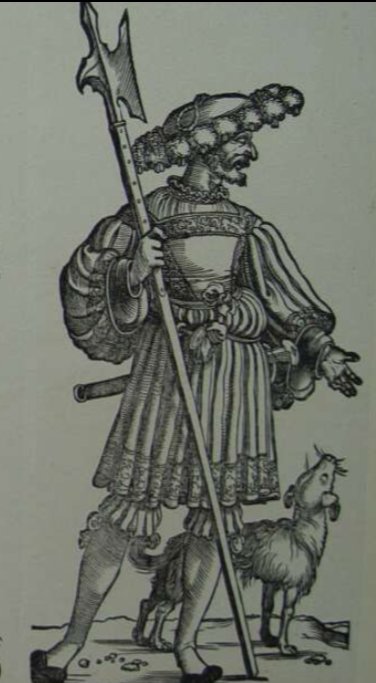
The Holbein painting shows a Rock with a square neckline, short wide sleeves, and a heavily pleated knee-length skirt. The close-up shows that contrast guards are of thick fabric, with quatrefoil cutouts revealing the fabric beneath. The guards in the bodice are more ornate; those on the skirt become wider and more ornate at the base.
I was given the wool to make the Rock – a dense lightweight twill in bright red, 150cm wide. I had some white tabby woven wool which would work for the contrast bands.
Construction
I drafted a simple bodice, with side-lacing. I can no longer find the sleeve pattern, but it was a simple shape, lightly gathered at the shoulder and cropped at the elbow. There is no skirt pattern – I drafted this straight onto the fabric, cutting 3 curved drops from the wide red wool (3 times the waist measurement in total). I cut the bodice pieces in canvas and cut red linen linings using the same patterns.



I simplified the placement of the guards, but kept the cutout pattern of alternating quatrefoils and pairs of dots seen in the Holbein painting. The guards on the skirt are not straight strips – I used the skirt pieces as a pattern to cut the correct arcs in white wool, then joined these to form one long strip.
I hot-washed and dried the white wool on hot to felt the fabric and reduce fraying. After some experiments, I decide to use Bondweb to fuse the guards to the red wool. I made a stencil, traced the design onto the Bondweb paper and ironed this to the white wool strips. I cut out the quatrefoils with small scissors and used a leather punch for the small round holes – fast and neat.
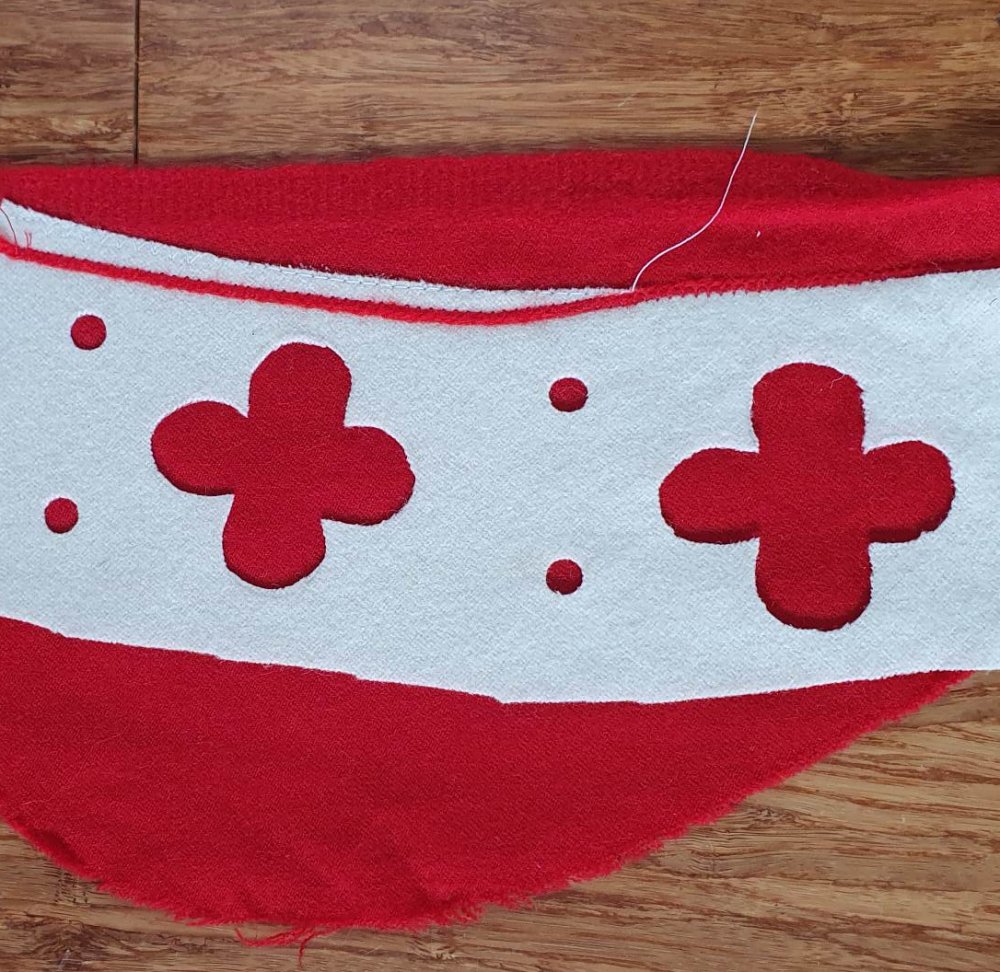
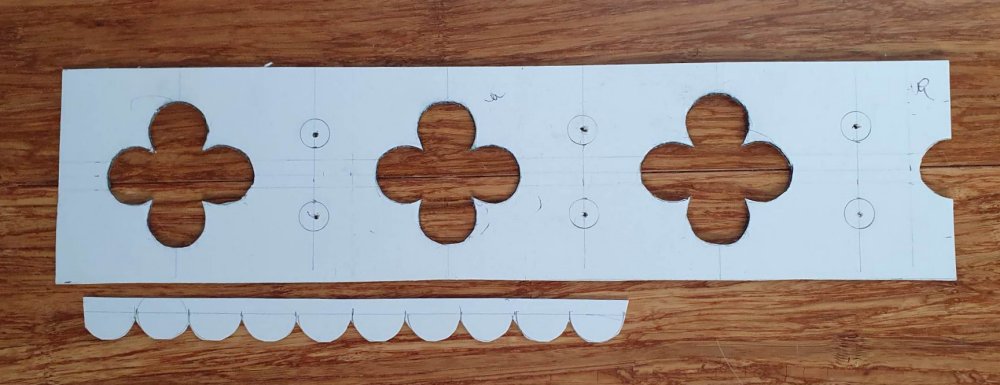
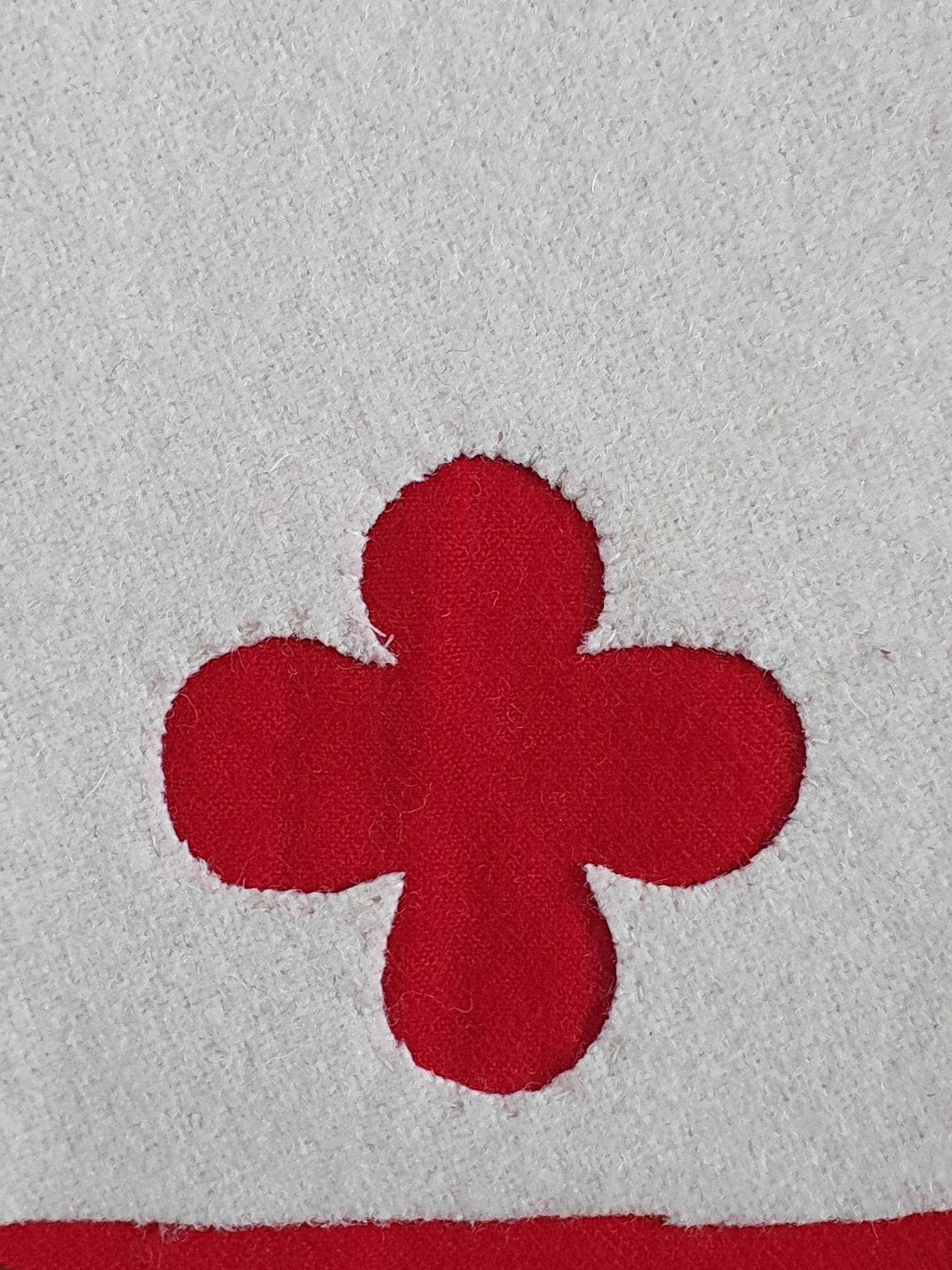
I interlined the bodice sections in canvas, then sewed the bodice shoulders together. I applied the guards to the front and over the shoulders, machine-stitching the edges of the strips onto the red wool in off-white thread. I tried a couple of ways to secure the quatrefoil edges – running stitch and overcasting – but it was clear there would be no time to do this before the event.
I sewed the sleeve seam, added the guard and then lined the sleeve and gathered the sleeve heads. I sewed the side seam and inserting the sleeves, then lined the body of the bodice. I sewed the skirt panels tog ether, leaving a small opening at the top of one seam, then applied the guards to the base of the skirt, hiding the join at the back.
I sewed the lining pieces together and lined the skirt throughout, then cartridge pleated it onto the completed bodice, lining up the split with the open side. Finally, I sewed on hooks and eyes to close the bodice – just in time for it to be worn at the event!
